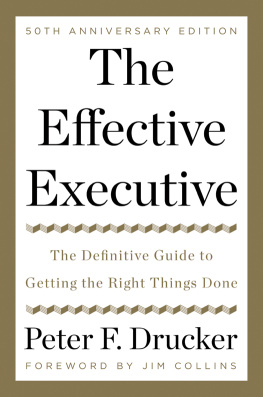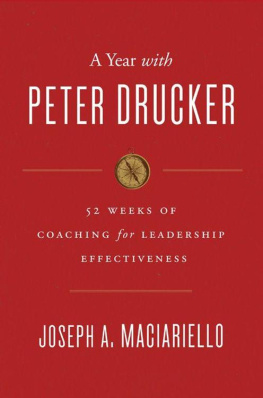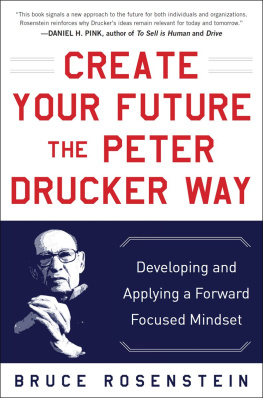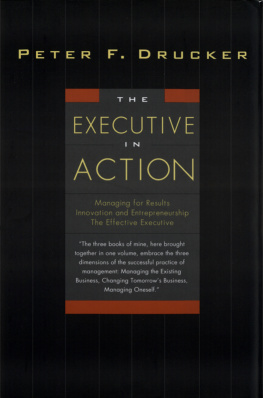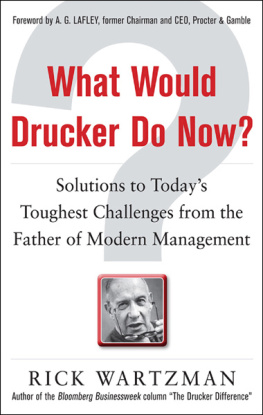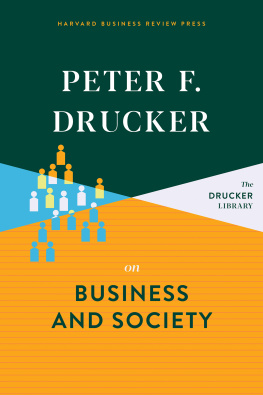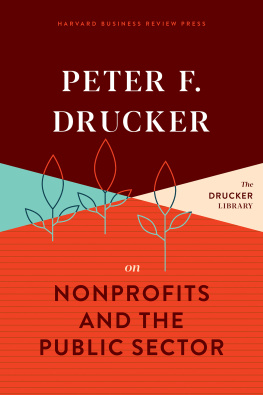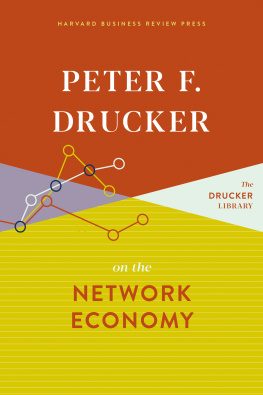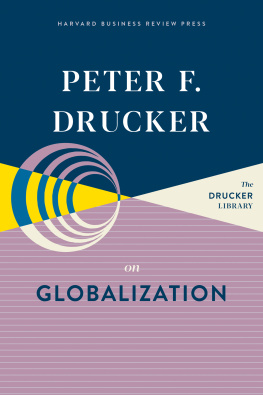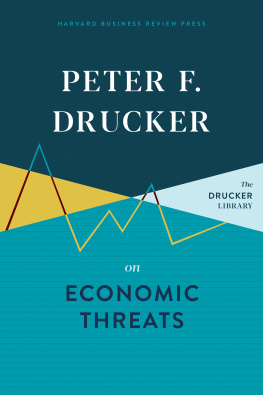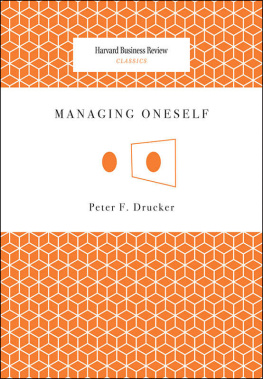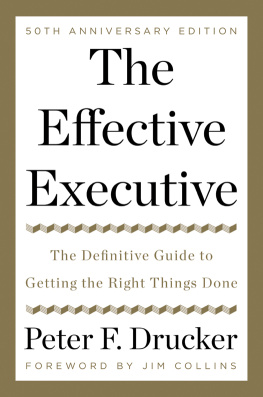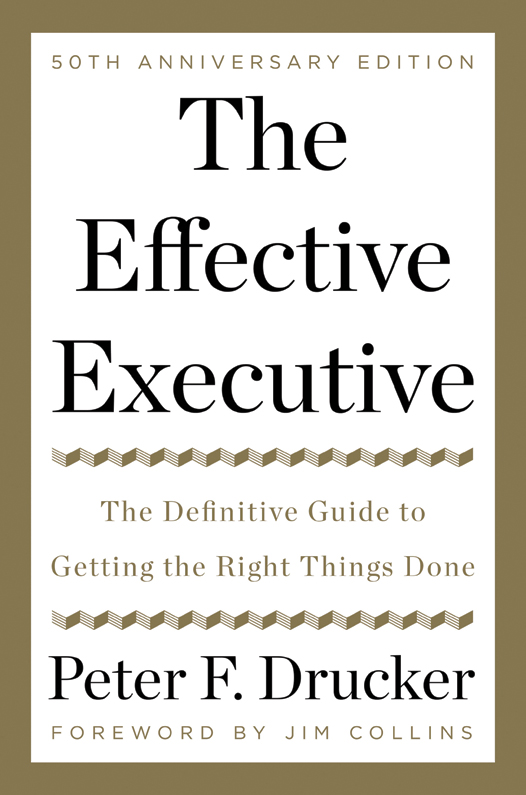Ten Lessons I Learned from Peter Drucker
IF YOU ARE to read one book on executive self-management, it should be this, Peter Druckers definitive classic, The Effective Executive. It doesnt matter what size your organization is, or even whether you run an organization at all. Anyone who has responsibility for getting the right things doneanyone who seeks how best to self-deploy on the few priorities that will make the biggest impactis an executive.
The most effective among us have the same number of hours as everyone else, yet they deploy them better, often much better than people with far greater raw talent. As Drucker states early in these pages: People endowed with tremendous brilliance are often strikingly ineffectual. And if thats true for the exceptionally brilliant, what hope is there for the rest of us? Actually, there is something much better than hope: Druckers practical disciplines.
I first read The Effective Executive in my early thirties, and it was a huge inflection point in my own development. Reading the text again, Im reminded of how its lessons became deeply ingrained, almost as a set of commandments. Some of Druckers examples and language might be dated, but the insights are timeless and modern, as helpful today as when he wrote them more than five decades ago. Here are ten lessons I learned from Peter Drucker and this book, and that I offer as a small portal of entry into the mind of the greatest management thinker of all time.
#1: First, manage thyself.
That one can truly manage other people is by no means adequately proven, Drucker writes. But one can always manage oneself. How can you possibly expect others to perform at the highest levels without first expecting that of yourself? Drucker lays out a law of organized performance: The ratio of a leaders performance to those on his or her team remains constant; therefore, if you want the average performance of those around you to go up, you must first improve your own performance.
#2: Do what youre made for.
One of Druckers most arresting points is that we are all incompetent at most things. The crucial question is not how to turn incompetence into excellence, but to ask, What can a person do uncommonly well? This leads, inevitably, to a conclusion: Your first responsibility is to determine your own distinctive competenceswhat you can do uncommonly well, what you are truly made forand then navigate your life and career in direct alignment. To focus on weakness is not only foolish; it is irresponsible, challenges Drucker. Does Druckers Build on strength imperative mean never confronting our (or others) deficiencies? Yes and no. It means that if youre made to be a distance runner, dont try to be a middle linebacker. At the same time, you must address deficiencies that directly impede full flowering of your strength. When Michael Jordan was reaching the end of his basketball career, he could no longer fly to the basket with the same height and power as when he was younger, so he began to build a strength hed never previously had: a fadeaway jumper. He eradicated a crucial weakness within his strength, turning his fadeaway jumper into yet another Jordan-can-kill-you strength on the court. Do what youre made for, yes, but then get better and better; eradicate weakness, yes, but only within strength.
#3: Work how you work best (and let others do the same).
If youre a tool put here on this earth to be useful, how does the tool work best? Some people work well at night; others work better in the morning. Some absorb information best by reading, others by listening. Some thrive in full immersion; others work better in short bursts with variety in the day. Some are project oriented; others are process oriented. Some need vacations; others think the best part about vacations is that they end. Some prefer teams, whereas others produce much greater impact working alone. Per Drucker, we are wired for ways of working in the same way we are right-handed or left-handed. I discovered early that I cannot exchange morning creative hours for afternoon creative hours (the morning ones are always better). Drucker gave me the confidence to calendar white space in the morning and to be belligerently reclusive during creative hours. No one but you can take responsibility to leverage how you best work, and the sooner you do, the more years you have to gain the cumulative effect of tens of thousands of hours well spent.
#4: Count your time, and make it count.
Drucker taught that what gets measured gets managed. So, how can we possibly hope to manage our time if we dont measure precisely where our time goes? Inspired by Druckers challenge, Ive kept a spreadsheet with one key metric: the number of creative hours logged each day, with the self-imposed imperative to stay above a thousand creative hours a year. This mechanism keeps me on the creative marchdoing research, developing concepts, and writingdespite ever-increasing demands for travel, team leadership, and working with executives. But you also have to make your time count. The secret of people who do so many difficult things, writes Drucker, is that they do only one thing at a time; they refuse to let themselves be squandered away in small driblets [that] are no time at all. This requires the discipline to consolidate time into blocks, of three primary types. First, create unbroken blocks for individual think time, preferably during the most lucid time of day; these pockets of quietude might be only ninety minutes, but even the busiest executive must do them with regularity. Second, create chunks of deliberately unstructured time for people and the inevitable stuff that comes up. Third, engage in meetings that matter, making particular use of carefully constructed standing meetings that can be the heartbeat of dialogue, debate, and decision; and use some of your think time to prepare and follow up.
#5: Prepare better meetings.
The oft-repeated quip, Im sorry to write you a long letter, as I did not have time to write a short one, could be applied to meetings: Im sorry to imprison you in this long meeting, as I did not have time to prepare a short one. Effective people develop a recipe for how to make the most of meetings, and they employ their recipes with consistent discipline. And while there are many varieties of good meeting recipes, just as there are many recipes for baking tasty cookies, Drucker highlights two common ingredients: preparation with a clear purpose in mind (why are we having this meeting?) and disciplined follow-up. Those who make the most of meetings frequently spend substantially more time preparing for the meeting than in the meeting itself. To abuse other peoples time by failing to prepare shorter, better meetings amounts to stealing a portion of their lives. And while we must all lead or join meetings, they should be limited to those that do the most useful work; if meetings come to dominate your time, then your life is likely being ill-spent.
#6: Dont make a hundred decisions when one will do.
Were continually hit by a blizzard of situations, opportunities, problems, incidentsall of which seem to demand decisions. Yes. No. Go. No-go. Buy. Sell. Attack. Retreat. Accept. Reject. Reply. Ignore. Invest. Harvest. Hire. It can feel like chaos, but the most effective people find the patterns within the chaos. In Druckers view, we rarely face truly unique, one-off decisions. And there is an overhead cost to any good decision: It requires argument and debate, time for reflection and concentration, and energy expended to ensure superb execution. So, given this overhead cost, its far better to zoom out and make a few big generic decisions that can apply to a large number of specific situations, to find a pattern withinin short, to go

